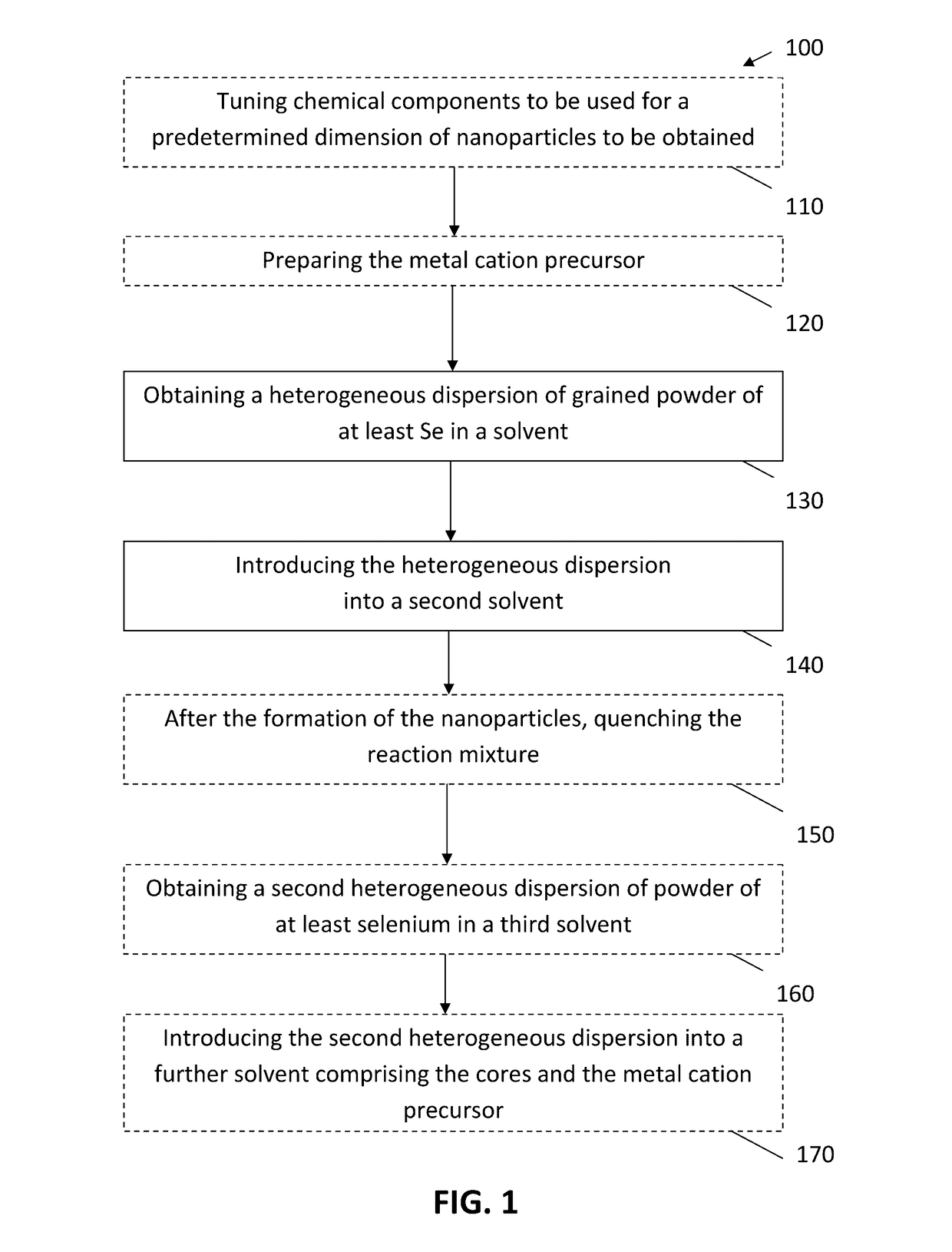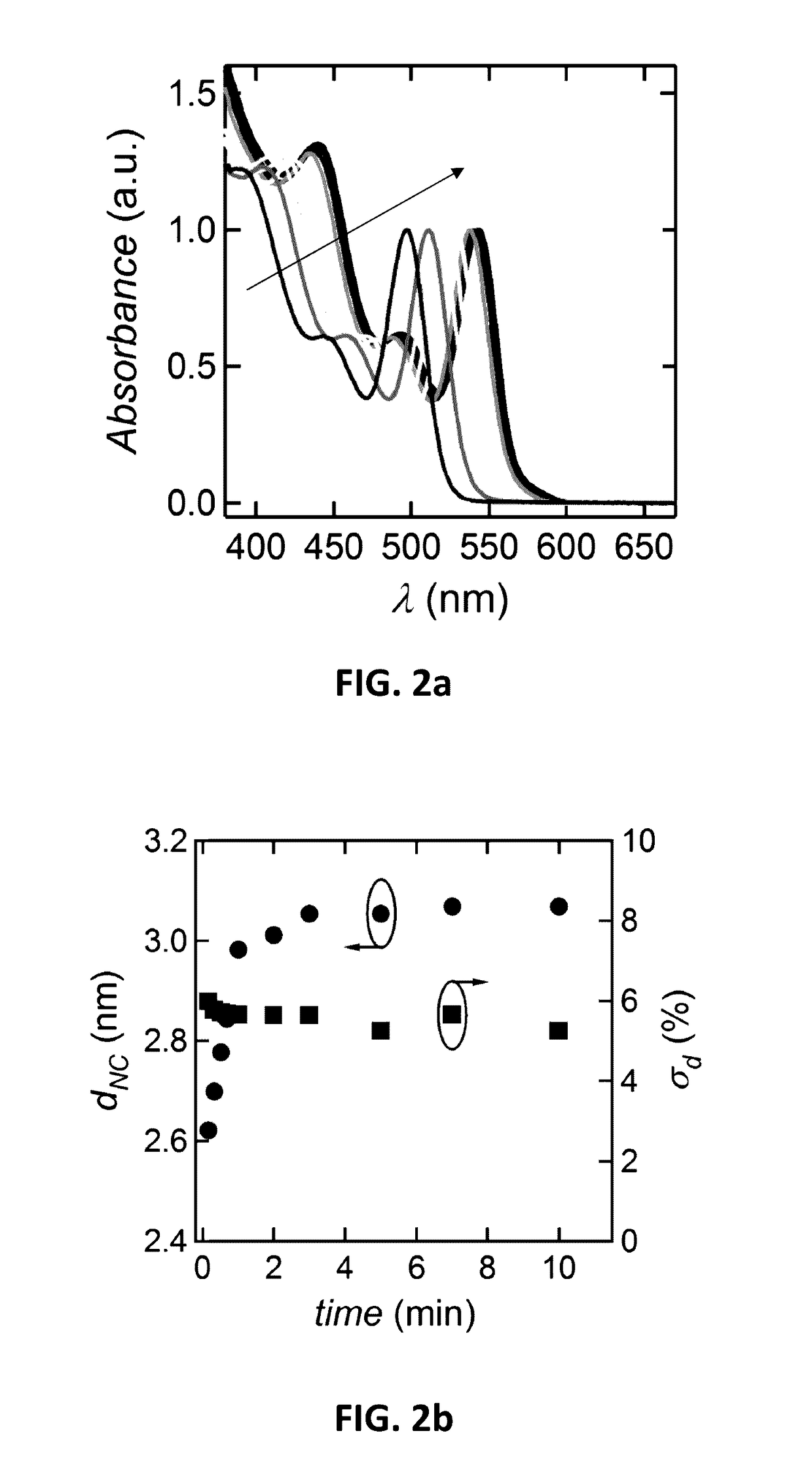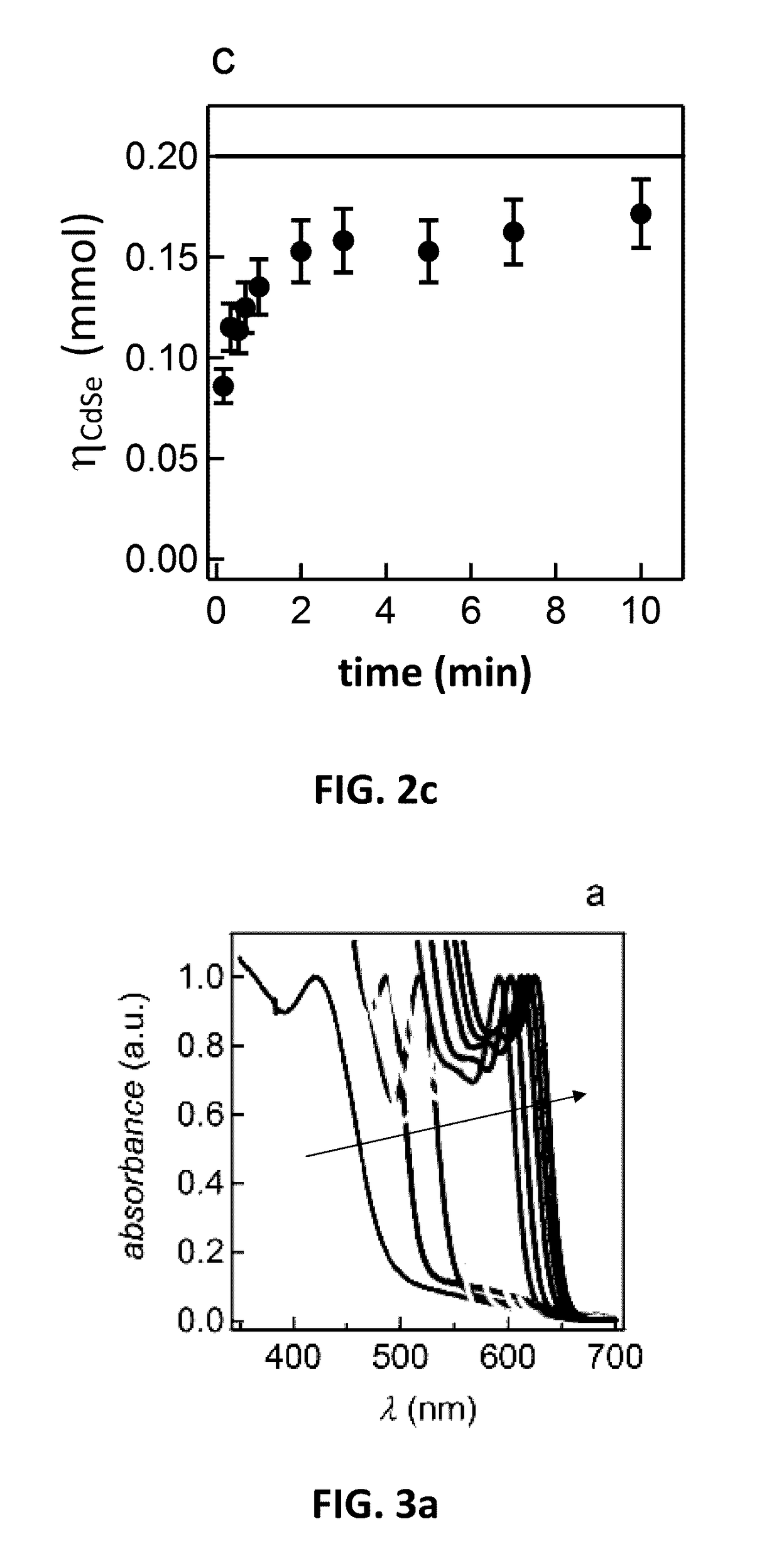Synthesis of nanomaterials
a technology of nanomaterials and nanoparticles, applied in the field of nanoparticles, can solve the problems of low reaction yield in combination with cadmium carboxylate, high cost, and high cost, and achieve the effect of improving the yield of hot injection synthesis
- Summary
- Abstract
- Description
- Claims
- Application Information
AI Technical Summary
Benefits of technology
Problems solved by technology
Method used
Image
Examples
example 1
[0083]By way of illustration, embodiments of the present invention not being limited thereto, a further number of experimental results on the manufacturing of nanoparticles and the characterisation thereof will further be discussed, illustrating features and advantages of embodiments of the present invention.
[0084]In the experiments discussed below, the following chemicals were used: cadmium oxide (99.99%, Alfa Aesar), 1-octadecene (ODE, 90%, Alfa Aesar), oleic acid (OA, 90%, Alfa Aesar), behenic acid (97% Fluka), arachidic acid (99%, Sigma), palmitic acid (98%, Merck), myristic acid (99%, Sigma), capric acid (99.9%, Merck), dodecanoic acid (99%, Sigma); Se (99.999%, Alfa Aesar, 200 mesh), ZnO (99.999%, Sigma), Squalene (98%, Alfa Aeser). Acetone, chloroform, methanol, ethanol and toluene were all of analytical grade. All chemicals and solvents were used without further purification.
[0085]In the experiments discussed below, material characterization was performed using different tec...
example 2
[0107]ZnSe particles were grown, using a similar synthesis method as described for the first example of this set of experiments. In brief, 0.4 mmole of ZnO were mixed with 1.2 mmole of oleic acid and 10 mL of squalene. The solution was heated up to 340° C. to form the zinc carboxylate. The use of the squalene is due to the high temperature needed to dissolve the ZnO. The temperature is higher than the boiling point of the ODE. The solution was cooled down to 270° C., then 1 mL of the heterogeneous ODE-Se (0.2 M) precursor was injected. Aliquots were taken at fixed times (7 s, 15 s, 30 s, 1 min, 2 min, 4 min, 8 min and 16 min). The reaction temperature is set to 260° C. Again, the absorption spectra of aliquots taken at different times after the reaction FIG. 14a indicate the formation of ZnSe NCs that grow larger with increasing reaction time (the arrow indicates increasing reaction time). The development of the wavelength of the first exciton transition as a function of time (14b) ...
example 3
[0108]Copper selenide Cu2Se nanoparticles were formed using copper acetylacetonate Cu(AcAc)2 dissolved in oleyamine (OLA) as a coordinating solvent. This first mixture was heated up to 130° C. At this temperature a second mixture of OLA and selenium powder, the selenium powder being dispersed in the OLA, was injected in the first mixture, whereby the copper Cu and selenium Se were present in a 1:1 ratio. The blue copper acetylacetonate reacted immediately forming black copper selenide Cu2Se nanoparticles. After 15 minutes the reaction was quenched.
PUM
| Property | Measurement | Unit |
|---|---|---|
| temperature | aaaaa | aaaaa |
| frequency | aaaaa | aaaaa |
| temperature | aaaaa | aaaaa |
Abstract
Description
Claims
Application Information
 Login to View More
Login to View More - R&D
- Intellectual Property
- Life Sciences
- Materials
- Tech Scout
- Unparalleled Data Quality
- Higher Quality Content
- 60% Fewer Hallucinations
Browse by: Latest US Patents, China's latest patents, Technical Efficacy Thesaurus, Application Domain, Technology Topic, Popular Technical Reports.
© 2025 PatSnap. All rights reserved.Legal|Privacy policy|Modern Slavery Act Transparency Statement|Sitemap|About US| Contact US: help@patsnap.com



